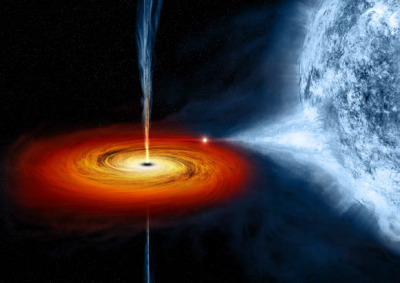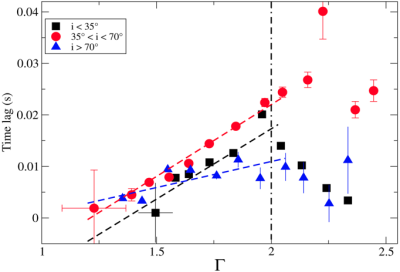Inclination effects on the X-ray emission of Galactic black-hole binaries
Galactic black-hole X-ray binaries (BHBs) emit a compact, optically thick, mildly relativistic radio jet when they are in hard and hard-intermediate states. In these states, BHBs exhibit a correlation between the time lag of hard with respect to softer photons and the photon index of the power law component that characterizes the X-ray spectral continuum above ∼10 keV. The correlation, however, shows large scatter. In recent years, several works have brought to light the importance of taking into account the inclination of the systems to understand the X-ray and radio phenomenology of BHBs. We have investigated the role that the inclination plays on the correlation between the time lag and photon index.


P. Reig and N. Kylafis of IA-FORTH computed energy spectra and light curves of BHBs using the Monte Carlo technique that reproduces the process of Comptonization in the jet. The authors can account for the inclination effects by recording the photons that escape from the jet at different angles. From the simulated light curves and spectra, they obtained model-dependent photon index and time lags, which they compared with those obtained from the real data.
The large dispersion observed in the time lag – photon index correlation in BHBs can naturally be explained as an inclination effect. High-inclination systems display, on average, a flatter correlation. Comptonization in the jet explains the steeper dependence of the lags on the photon index in low- and intermediate-inclination systems than in high-inclination systems.
The most remarkable result of this work is the fact that it can reproduce the observed correlations between time lag and photon index for systems with different inclination angles, with the same set of models, by simply looking at the jet with different viewing angles.
Article: P. Reig, N. Kylafis, Inclination effects on the X-ray emission of Galactic black-hole binaries, A&A, 625, A90 (2019).
